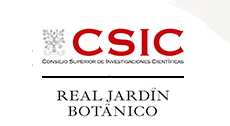Scientific Area
Abstract Detail
Nº613/1916 - Sequence diversity and chromosome evolution in Musaceae inferred from t2t genome assemblies and molecular cytogenetics
Format: ORAL
Authors
Trude Schwarzacher1,2,Ziwei Wang3, Dongli Cui3, Mathieu Rouard4, Prof Pat (J.S.) Heslop-Harrison1,3, Qing Liu3
Affiliations
1 Department of Genetics and Genome Biology, Institute for Environmental Futures, University of Leicester, U.K.
2 Key Laboratory of Plant Resources Conservation and Sustainable Utilization / Guangdong Provincial Key Laboratory of Applied Botany, South China Botanical Garden, Chinese Academy of Sciences, Guangzhou, China
3 Henry Fok School of Biology and Agriculture, Shaoguan University, Shaoguan, China
4 Bioversity International, Parc Scientifique Agropolis II, Montpellier, France
Abstract
The family Musaceae, with three genera Musa, Musella and Ensete, belongs to the Zingiberales order, is native to the tropics and subtropics of East-Asia and Africa, and includes important crops and ornamental species. To understand the evolution of Musaceae genomes and species, we combined data from chromosome scale assemblies with fluorescent in situ hybridization to describe the chromosomal rearrangements and repetitive DNA composition. Some 50-60% of the genomes are composed of repetitive sequences with LTR-retroelements and DNA transposons predominant and their families distributed among different groups of species. A tandemly repeated 134bp satellite sequence is present at the centromeres of Ensete glaucum, E. ventricosum and Musella lasiocarpa, but no tandem repeat was found at Musa centromeres. 45S rDNA and 5S rDNA have variable numbers and chromosomal locations and occupy often otherwise non-syntenic arms. The individual haplotype assemblies of M. lasiocarpa showed high degree of alignment at the distal parts of the chromosome arms, but inversions and duplication of repetitive elements near the centromeres, cause haplotype differences in all chromosomes. Within Musaceae, the telomere-to-telomere assemblies, including centromeric positions, enabled us to characterize the syntenic relationships and chromosomal rearrangements. Musella and Ensete, both x=9, show only few whole arm translocations and large regions of synteny supporting the close relationship but separation of genera, while the x=11 Musa species are phylogenetically separate with many more postulated chromosomal rearrangements and genetic differences. This insights into the chromosomal and repetitive sequence evolution of Musaceae genomes along with gene and regulatory sequences in the assemblies, add to a comprehensive and robust pangenome of Musa and Ensete, valuable to understanding evolutionary mechanisms and genome diversity, adaptation to climate changes and for crop improvement.




